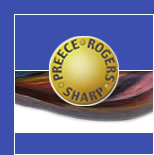|
Chapter
Introduction |
Web Resources | Assignment
Comments | Teaching Materials
CSCW
and groupware
There are many good sources
of information about CSCW and groupware.
A good starting point is the usabilityfirst
portal.
There are lots of papers that researchers
have made available online. A good overview of CSCW (up until
1994) by Jonathan Grudin is CSCW:
history and focus
Many university departments have an impressive
array of papers and other materials available online. For
example, have a look at The University of Calgary's GroupLab.

Ethnographic
studies
There are a number of reports of ethnographic
studies available on the web. One of the most extensive collections
put together is by a European consortium of researchers who
worked together on a project called COTCOS
-Cooperative Technologies for Complex Work Settings. There
are about 20 studies, covering all manner of areas, using
quite different analytic approaches with which to discuss
their findings.

Theoretical
approaches
We only really touch upon some of the theoretical
approaches that are available in HCI and CSCW in the book.
An extensive set of papers covering a diversity of theoretical
approaches (including Activity Theory, Distributed Cognition,
External Cognition, Cognitive Ergonomics, Ethnomethodology,
Coordination Theory, Organisational Theory and Computer Science
theories) can also be found at the COTCOS
resource site.

Computer-mediated
Communication (CMC)
The best way to understand how CMC works is
to try it out yourself. There are various free software downloads
that you can try out.
Some examples include:
|
